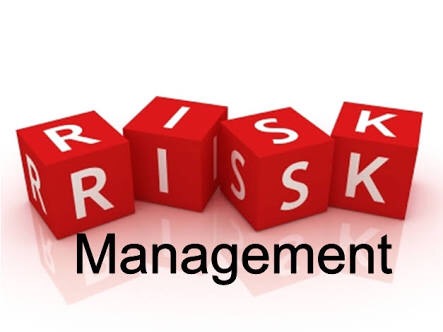… because it is a really smart thing to do :).
It is the first week of the year, and a lot of us have new year resolutions and “never again” predictions. Happy new year by the way :D. The new year usually brings along with it a heightened sense of hope and “can-doism.” But how many of us think about how to protect ourselves from the things that can go wrong? Have we included insurance in our financial plan?
This week we start the two-part introductory series on risk management; insurance is one of the most popular tools used for risk management. “Big grammar” you say? Ok, I will start from the top.
What is Risk?
In the simplest terms, risk refers to the possibility, no matter how tiny, that an undesirable event will occur. For example, the possibility that one’s car will be scratched by a danfo is a risk drivers in Lagos face every day. Other risks we continuously face include:
- the risk of falling ill,
- the risk of unfavorable government policies (e.g. the Nigerian government’s recent foreign exchange policy pronouncements),
- the risk of being hit by an okada while minding one’s business walking on the sidewalk.
So, life is full of risks – once we are born, we face numerous risks every day, whether we realize them or not; nothing new or special there. Some risks are significant, i.e. have a very high probability of occurrence – how many cars in Lagos have been spared “the scratch”? You get the drift :). While others are not, e.g. the risk of a meteorite falling on your house.
What is Risk Management?
Now that we know that risk abounds everywhere, just like air, we can talk about managing it, as the option of avoidance does not exist. Some people try to make themselves believe they are avoiding risk by claiming “it is not my portion,” but that is about as effective as an ostrich burying its head in the sand to escape from the trouble it sees ahead :). Even if you sit in your house all day every single day, the risk still exists that a plane will fall on your house – minute, but a risk nonetheless.
So, risk management is the process of categorizing one’s risk exposures into various buckets ranging from “significant” to “barely”, and then checking around to determine if there is a way to minimise the possibility of the risk occurring, or finding someone else out there who can do a better job of bearing that risk in exchange for a nominal fee.
“What was that?!” you ask? Here’s the breakdown:
Jummai resumed her first post-graduation job last year, and has been able to save enough money to buy her first car – brand new, cash down. Yippee! She has also been able to save enough to consider making a financial investment.
Jummai is the oldest of her 5 siblings, and has decided to assist her parents by taking on the financial responsibility of her youngest sister’s education; Halima is currently in elementary school, in Grade 5 (or Year 5, or Primary 5, depending on which nomenclature you are familiar with :)).
Her employer recently sent her on a training about personal risk management as part of her professional development curriculum, which she found extremely educational. She is now trying to apply what she has learnt.
The first step she is taking is to list the medium to significant risks she believes she is facing on a daily basis:
- health: the risk that she will fall ill and (i) have to spend a lot of her salary on medical expenses; and (ii) not be able to earn her income as the illness may affect her ability to get her job done.
- auto: her car may be involved in an accident that may, at best, result in damage to her car, another person’s car, or property. It could also result in bodily injury to herself, or other people.
- fire: her car or her residence may catch fire, destroying assets, some of which may be difficult to replace, and some which may be outright irreplaceable.
- theft: burglars may break into her home or car and dispossess her of her belongings.
- education of dependent: she may lose her ability to earn an income to continue to fund Halima’s education, either due to a long-term illness, a disability, or death.
- job loss: she may have her employment unexpectedly terminated by her employer and not be able to immediately secure another source of income.
- investment loss: she may lose some or all the money she has invested due to a general economic downturn, or a reversal in the fortunes of the entity(ies) she invests in.
In Part II, we shall look at each of these risks, and explore ways in which Jummai can either mitigate (i.e. reduce the possibility of the risk occurring) or manage (i.e. minimise her loss should the risk occur) them.
Are there any other risks you think Jummai is exposed to that she has not listed here? Please share in the comments box below.

Pingback: Risk Management 101 (Part II of II) | Finomics 101
Pingback: [Guest Post] The Importance of Financial Knowledge and Financial Planning – An Economic Migrant’s Perspective | Finomics 101